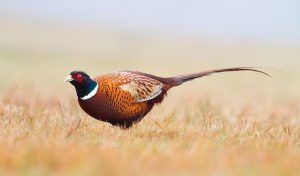
25 interesting facts about sand dollars
- 👁️ 1288
Sand dollars are fascinating creatures that reside on the ocean floor. Often found washed up on beaches, these marine animals are part of the echinoderm family, which also includes sea stars and sea urchins. Sand dollars have intrigued scientists and beachgoers alike with their unique shape, behavior, and life cycle. Despite their common name, sand dollars are not a form of currency but are valuable in their own right for the ecological role they play and the natural beauty they add to the marine environment. Here are 25 interesting and informative facts about sand dollars to deepen your appreciation for these extraordinary creatures.
- Sand dollars belong to the class Echinoidea, which includes sea urchins and sea cucumbers.
- They are found in temperate and tropical waters worldwide.
- The name “sand dollar” is derived from their appearance; when bleached by the sun, they resemble large, silver coins.
- Living sand dollars are covered in tiny, velvety spines that help them move across the ocean floor.
- These spines are also used for respiration and to catch and transport food particles to the sand dollar’s mouth.
- Sand dollars are flat, round marine animals closely related to sea urchins.
- When alive, their color can range from dark purple to brown, but they bleach to a white or pale color after death.
- The five-pointed pattern visible on the shell of a sand dollar is actually part of its respiratory system.
- Sand dollars use cilia (tiny hair-like structures) to burrow into the sand, where they live partially submerged.
- They primarily feed on microscopic algae, plankton, and detritus.
- The lifespan of a sand dollar can be up to 10 years in the wild.
- Sand dollars reproduce by releasing eggs and sperm into the water, where fertilization occurs externally.
- A single female sand dollar can produce millions of eggs during her lifetime.
- The rigid skeleton of a sand dollar is called a test.
- Sand dollars have a unique self-defense mechanism; they can clone themselves if threatened by predators.
- Predators of sand dollars include fish, starfish, and crabs.
- The “doves” often found inside a sand dollar’s test are actually the creature’s teeth, part of its feeding apparatus known as Aristotle’s lantern.
- In various cultures, sand dollars are symbols of peace, goodwill, and good luck.
- Sand dollars have tiny, tube feet that they use for locomotion and feeding.
- They play an important role in their ecosystem by recycling nutrients and aerating the sea floor.
- Fossil records show that relatives of modern sand dollars have existed for over 60 million years.
- Sand dollars can only survive in saltwater and are often found in large groups on the sea floor.
- The design on the top of a sand dollar is made up of petal-like patterns, which are actually pores that facilitate the movement of water into their internal water vascular system.
- Collecting live sand dollars is discouraged as it can negatively impact marine ecosystems.
- When held in the palm, a live sand dollar’s tiny spines can create a tingling sensation as they move.
Sand dollars are more than just seaside souvenirs; they are a testament to the complexity and wonder of marine life. Their unique adaptations for survival and reproduction, role in the oceanic food web, and the natural artistry of their tests make them a subject of endless fascination. As part of the broader ecosystem, sand dollars remind us of the interconnectedness of life under the sea and the importance of preserving marine habitats for future generations to explore and admire.











